Insulin‑like growth factor axis: A potential nanotherapy target for resistant cervical cancer tumors (Review)
- Authors:
- Miguel Morales-Rodríguez
- Lucero Paniagua-García
- Jayanthi Narayanan
- Horacio Zamudio-Meza
- Ramón Víctor Moreno-Torres
- Carlo César Cortés-González
- José Antonio Juanico-Lorán
- Beatriz Martínez-Pérez
- Jorge Fernández-Retana
-
Affiliations: Directorate of The Nanotechnology Engineering Division, Polytechnic University of The Valley of Mexico, Tultitlán, State of Mexico 54910, Mexico, Department of Biological Sciences, Section of Human Health Sciences, National Autonomous University of Mexico, Faculty of Advanced Studies Cuautitlán C1, Cuautitlán Izcalli, State of Mexico 54740, Mexico, Nanotechnology and Biotechnology Engineering Division, Polytechnic University of The Valley of Mexico, Tultitlán, State of Mexico 54910, Mexico, Immunochemistry Medical Research Unit, Specialty Hospital National Medical Center ‘Siglo XXI’ Mexican Social Security Institute, Mexico City 06720, Mexico, Microbial Ecology Laboratory, Unidad de Biotecnología y Prototipos‑UBIPRO, National Autonomous University of Mexico, Faculty of Advanced Studies Iztacala Tlalnepantla de Baz, State of Mexico 54090, Mexico, Biomedical Unit for Cancer Research, Department of Basic Research, Biomedical Research Institute, National Autonomous University of Mexico/National Cancer Institute, Mexico City 14080, Mexico, Nanotechnology and Biotechnology Engineering Division, Polytechnic University of The Valley of Mexico, Tultitlán, State of Mexico 54910, Mexico - Published online on: February 10, 2023 https://doi.org/10.3892/ol.2023.13714
- Article Number: 128
-
Copyright: © Morales-Rodríguez et al. This is an open access article distributed under the terms of Creative Commons Attribution License.
This article is mentioned in:
Abstract
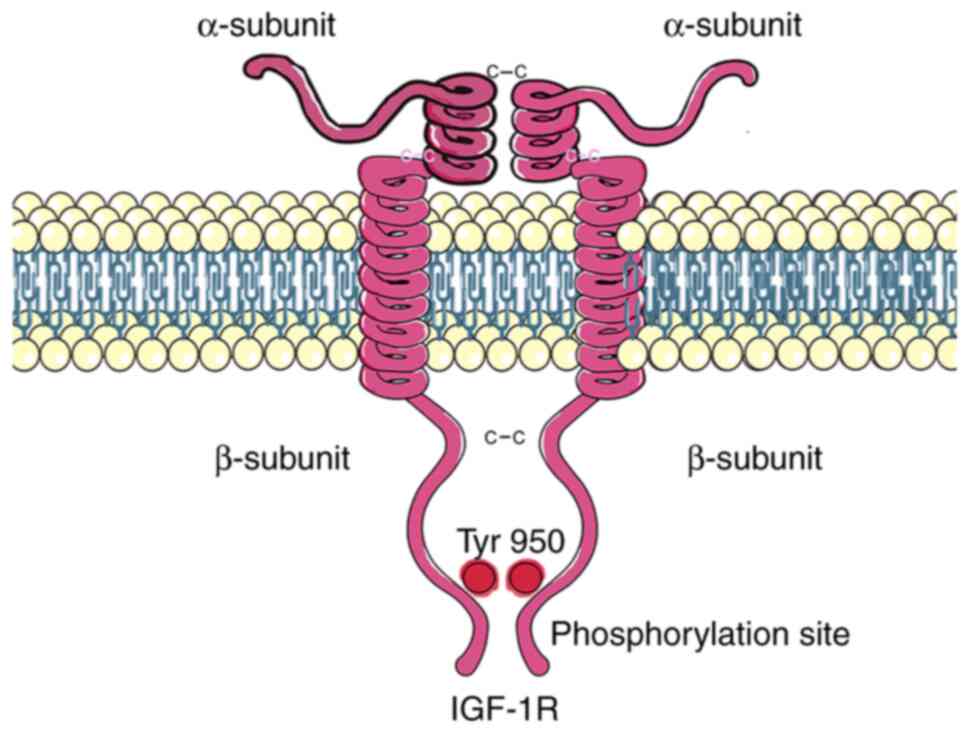 |
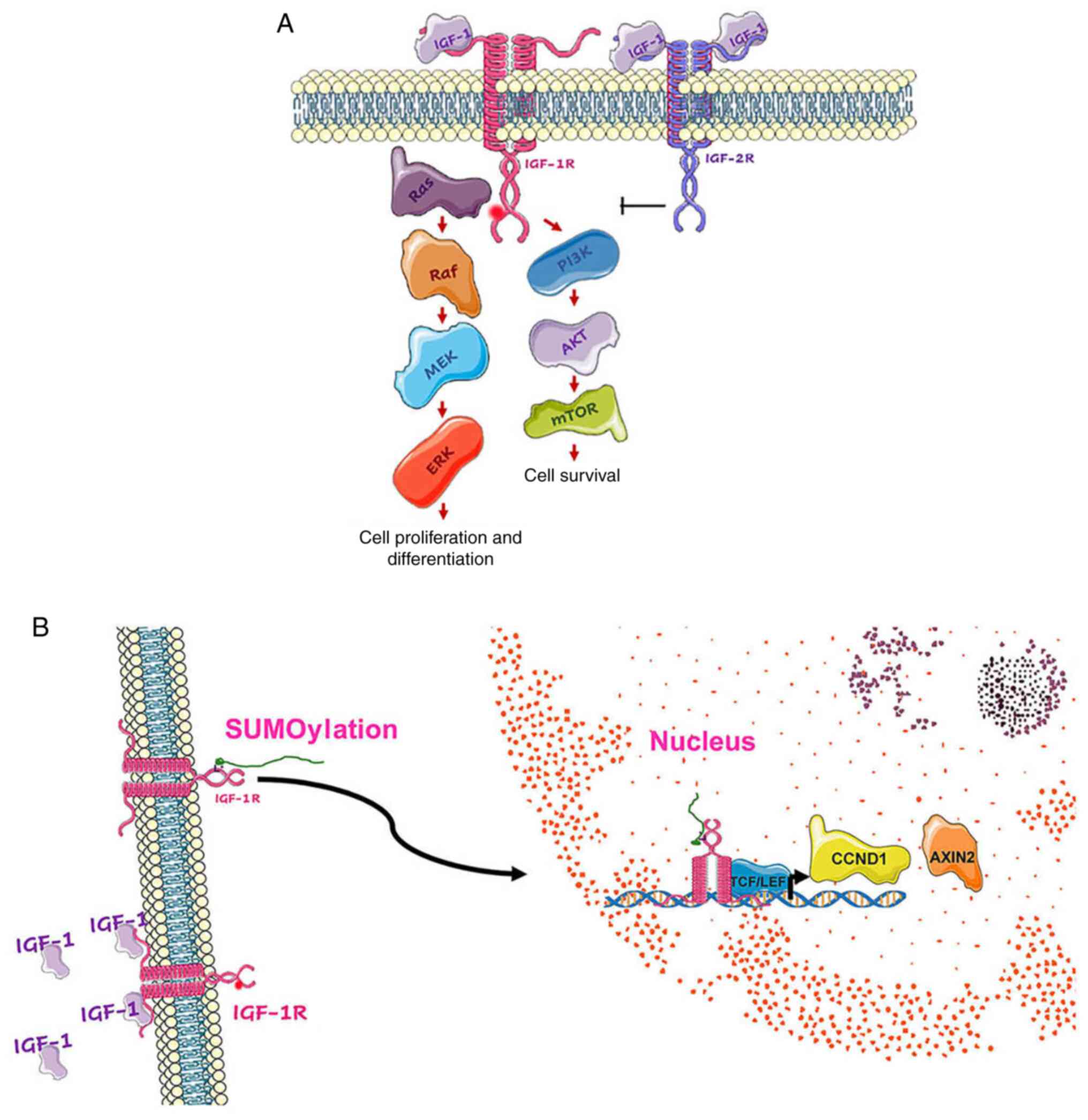 |
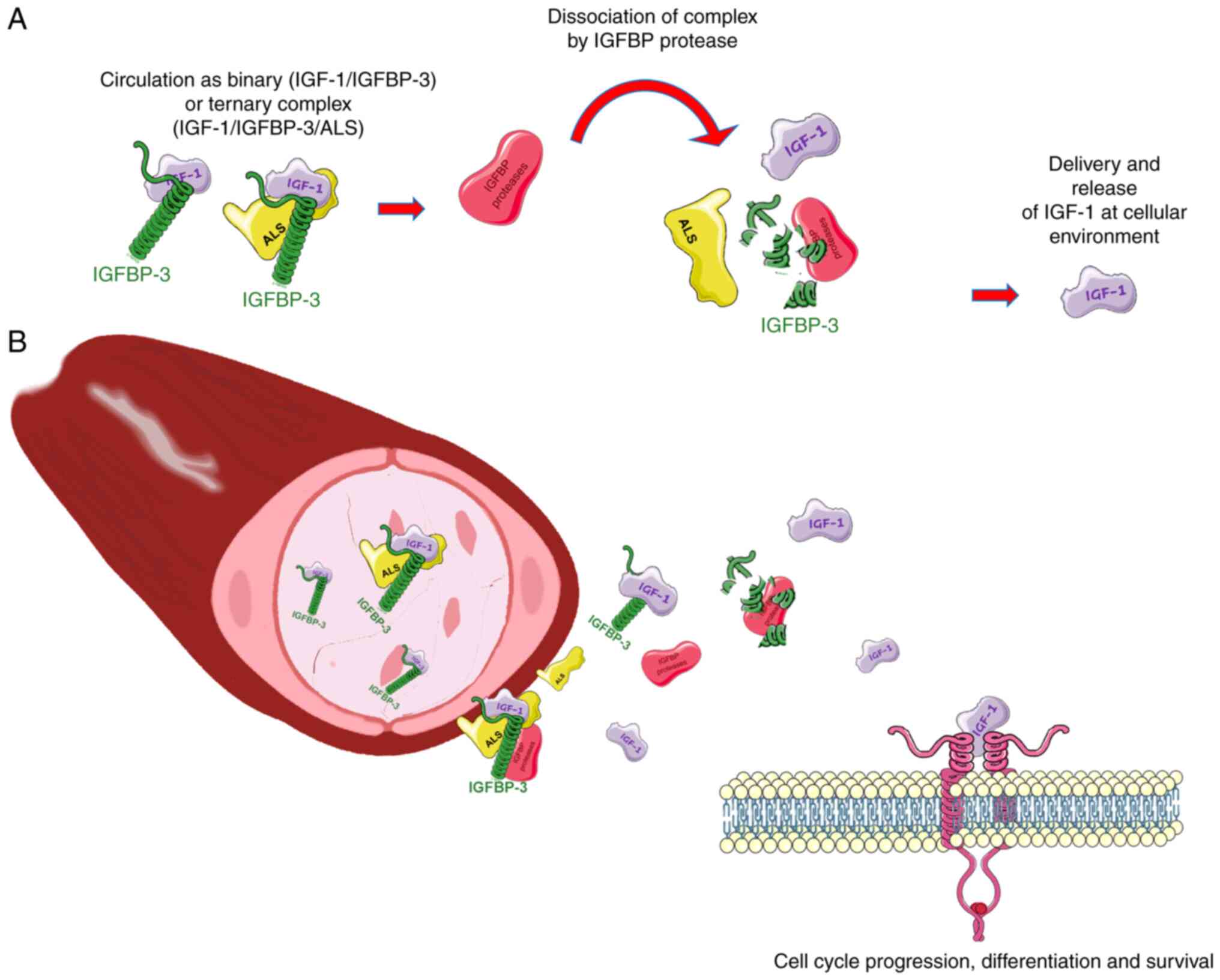 |
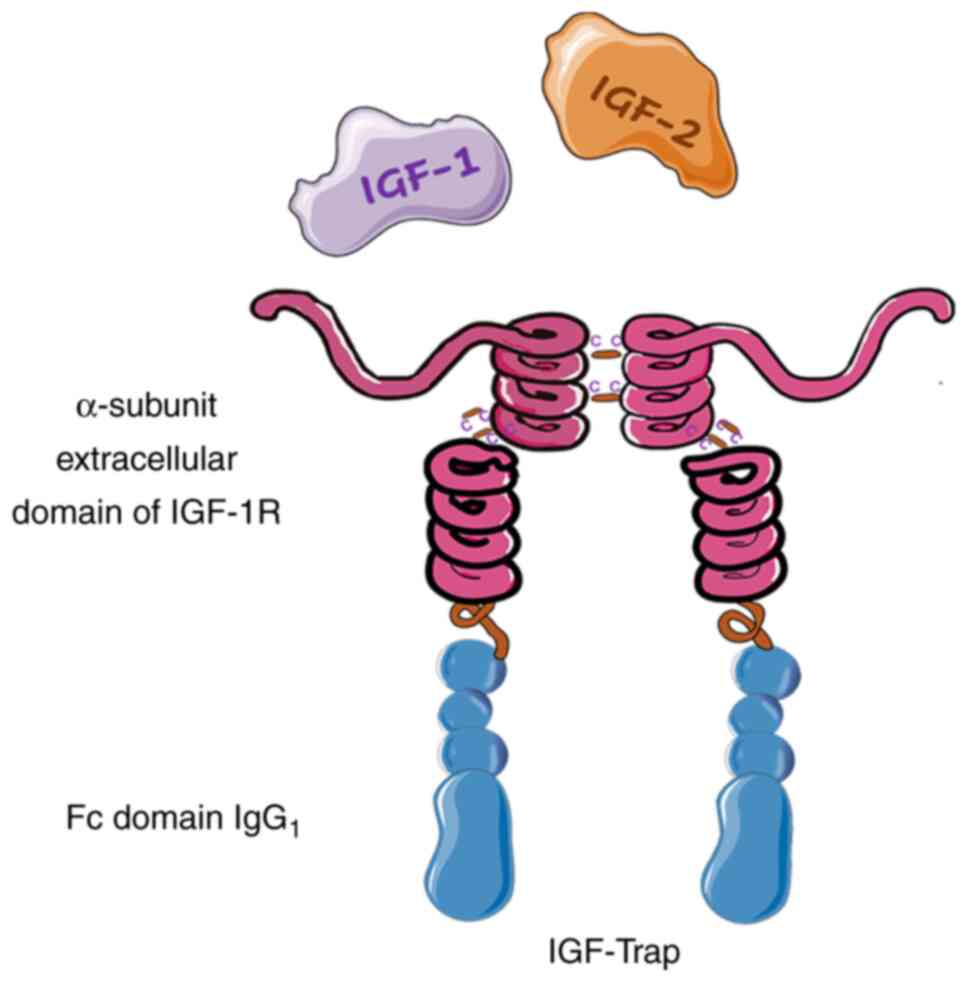 |
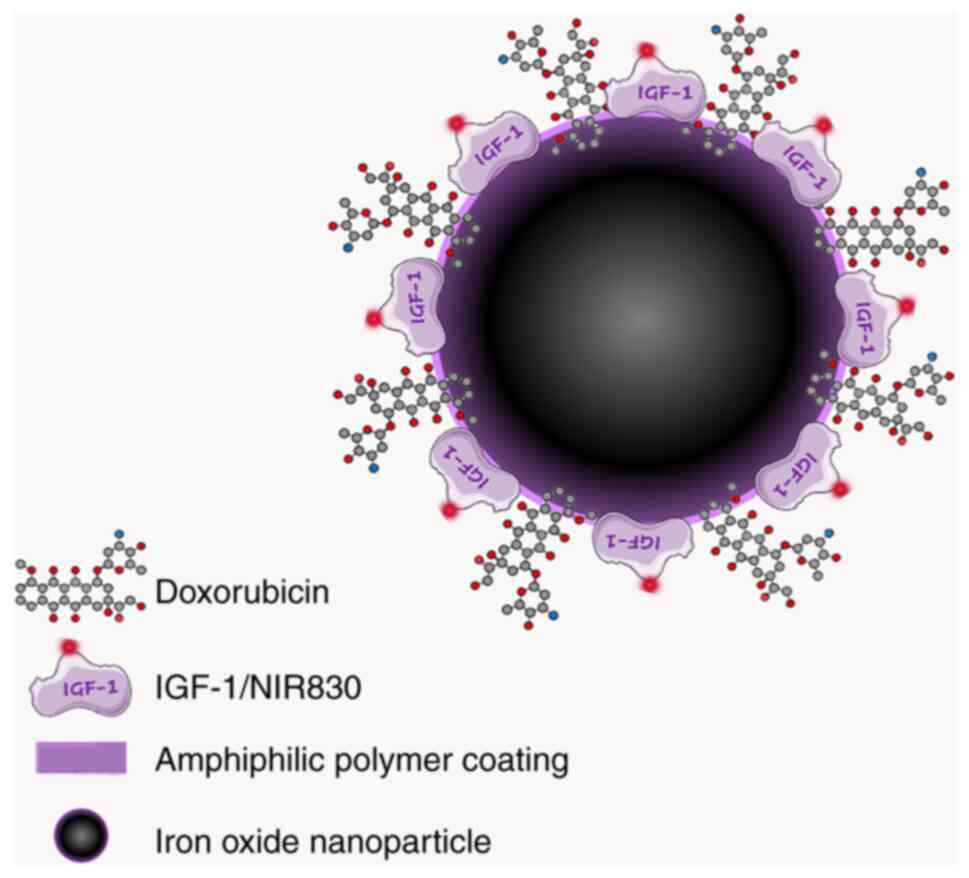 |
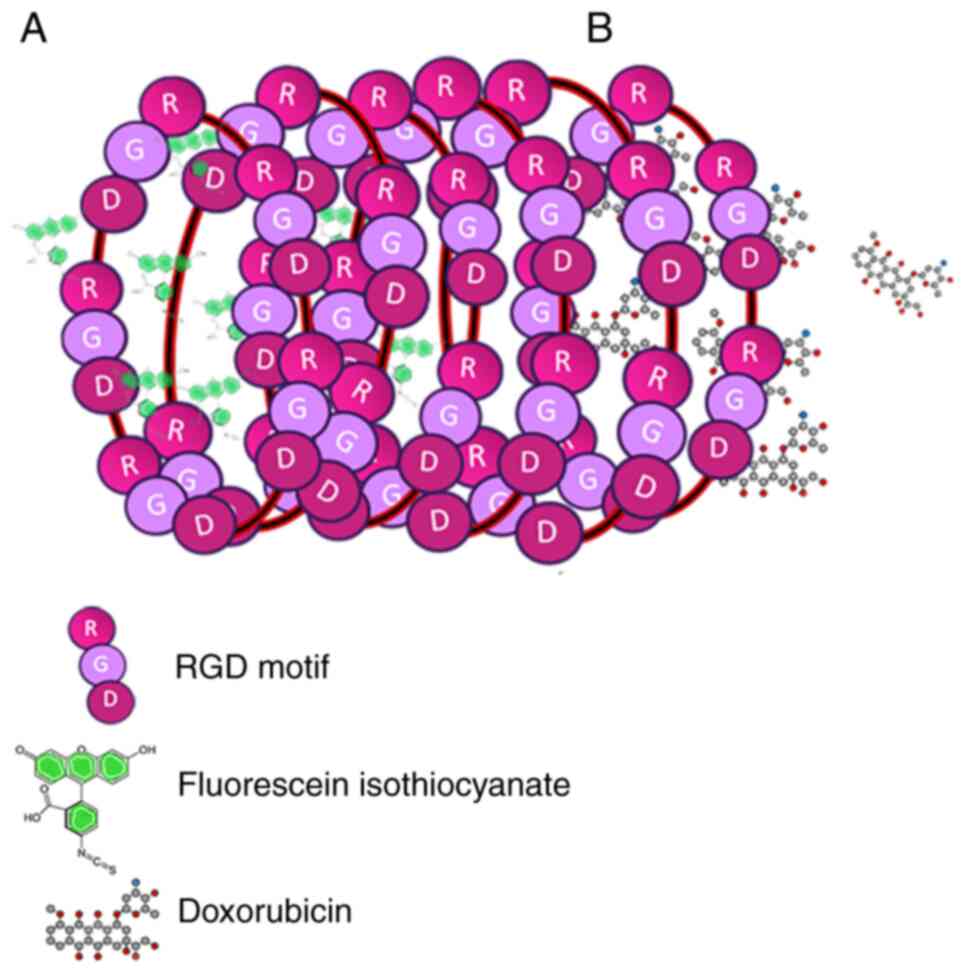 |
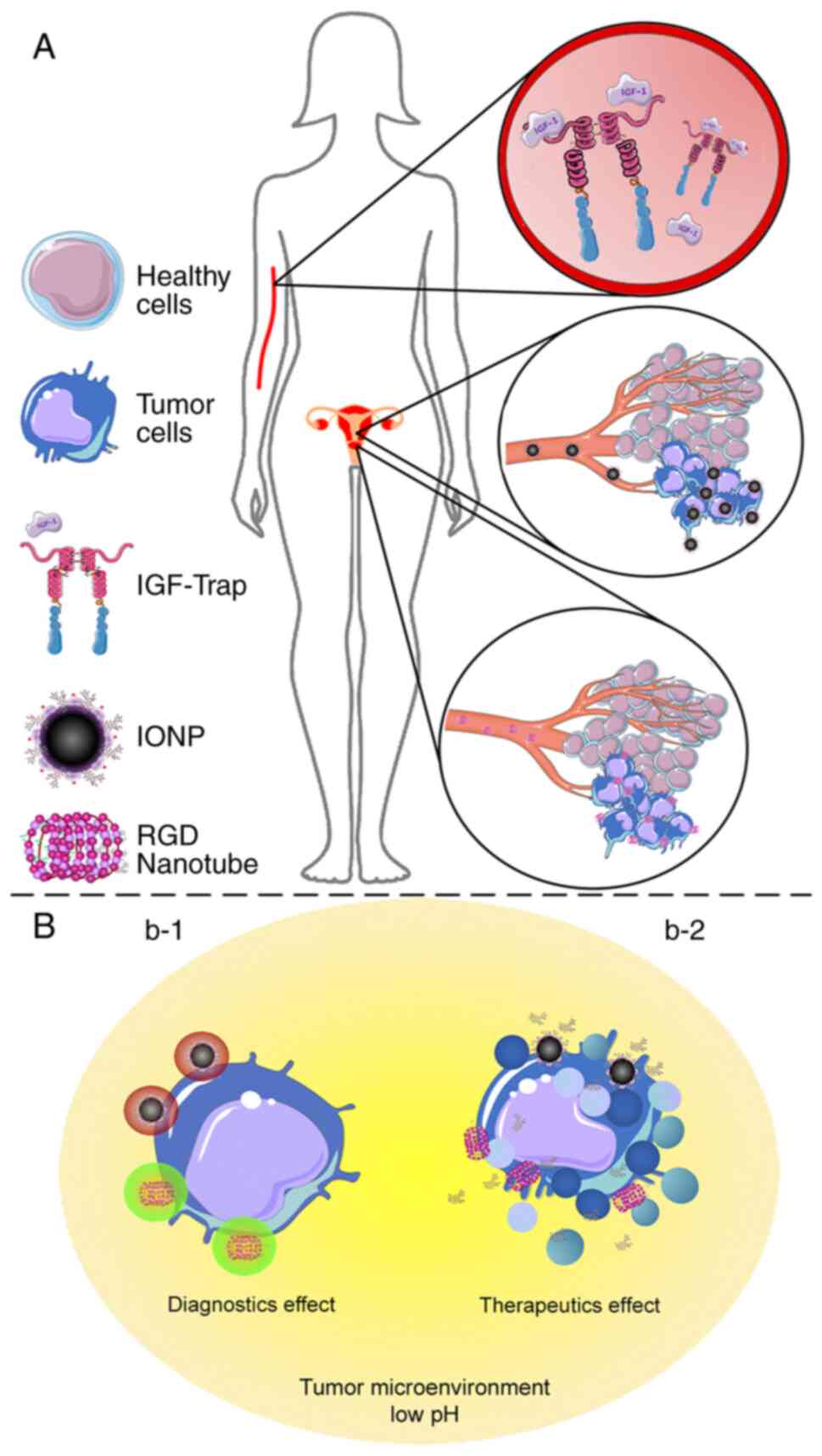 |
|
Bray F, Ferlay J, Soerjomataram I, Siegel RL, Torre LA and Jemal A: Global cancer statistics 2018: GLOBOCAN estimates of incidence and mortality worldwide for 36 cancers in 185 countries. CA Cancer J Clin. 68:394–424. 2018. View Article : Google Scholar : PubMed/NCBI | |
|
Aldaco-Sarvide F, Pérez-Pérez P, Cervantes-Sánchez G, Torrecillas-Torres L, Erazo-Valle-Solís AA, Cabrera-Galeana P, Motola-Kuba D, Anaya P, Rivera-Rivera S and Cárdenas-Cárdenas E: Mortalidad por cáncer en México: Actualización 2015. Gac Mex Oncol. 17:28–34. 2018. | |
|
Granados-García V, Flores YN, Pérez R, Rudolph SE, Lazcano-Ponce E and Salmerón J: Cost of the cervical cancer screening program at the Mexican social security institute. Salud Publica Mex. 56:502–510. 2014. View Article : Google Scholar : PubMed/NCBI | |
|
Murillo R, Almonte M, Pereira A, Ferrer E, Gamboa OA, Jerónimo J and Lazcano-Ponce E: Cervical cancer screening programs in Latin America and the Caribbean. Vaccine. 26 (Suppl 11):L37–L48. 2008. View Article : Google Scholar : PubMed/NCBI | |
|
McCormack M, Kadalayil L, Hackshaw A, Hall-Craggs MA, Symonds RP, Warwick V, Simonds H, Fernando I, Hammond M, James L, et al: A phase II study of weekly neoadjuvant chemotherapy followed by radical chemoradiation for locally advanced cervical cancer. Br J Cancer. 108:2464–2469. 2013. View Article : Google Scholar : PubMed/NCBI | |
|
Gadducci A and Cosio S: Neoadjuvant chemotherapy in locally advanced cervical cancer: Review of the literature and perspectives of clinical research. Anticancer Res. 40:4819–4828. 2020. View Article : Google Scholar : PubMed/NCBI | |
|
Fernandez-Retana J, Lasa-Gonsebatt F, Lopez-Urrutia E, Coronel-Martínez J, Cantu De Leon D, Jacobo-Herrera N, Peralta-Zaragoza O, Perez-Montiel D, Reynoso-Noveron N, Vazquez-Romo R and Perez-Plasencia C: Transcript profiling distinguishes complete treatment responders with locally advanced cervical cancer. Transl Oncol. 8:77–84. 2015. View Article : Google Scholar : PubMed/NCBI | |
|
Monk BJ, Enomoto T, Kast WM, McCormack M, Tan DSP, Wu X and González-Martín A: Integration of immunotherapy into treatment of cervical cancer: Recent data and ongoing trials. Cancer Treatment Reviews. 106:1023852022. View Article : Google Scholar : PubMed/NCBI | |
|
Bhatla N, Aoki D, Sharma DN and Sankaranarayanan R: Cancer of the cervix uteri: 2021 Update. Int J Gynecol Obstet. 155 (Suppl 1):S28–S44. 2021. View Article : Google Scholar | |
|
Naga Ch P, Gurram L, Chopra S and Mahantshetty U: The management of locally advanced cervical cancer. Curr Opin Oncol. 30:323–329. 2018. View Article : Google Scholar : PubMed/NCBI | |
|
Li H, Wu X and Cheng X: Advances in diagnosis and treatment of metastatic cervical cancer. J Gynecol Oncol. 27:e432016. View Article : Google Scholar : PubMed/NCBI | |
|
Höckel S, Schlenger K, Vaupel P and Höckel M: Association between host tissue vascularity and the prognostically relevant tumor vascularity in human cervical cancer. Int J Oncol. 19:827–832. 2001.PubMed/NCBI | |
|
Sims LB, Curry KC, Parupalli S, Horner G, Frieboes HB and Steinbach-Rankins JM: Efficacy of surface-modified PLGA nanoparticles as a function of cervical cancer Type. Pharm Res. 36:662019. View Article : Google Scholar : PubMed/NCBI | |
|
Sau S, Alsaab HO, Bhise K, Alzhrani R, Nabil G and Iyer AK: Multifunctional nanoparticles for cancer immunotherapy: A groundbreaking approach for reprogramming malfunctioned tumor environment. J Control Release. 274:24–34. 2018. View Article : Google Scholar : PubMed/NCBI | |
|
Chaturvedi VK, Singh A, Singh VK and Singh MP: Cancer nanotechnology: A new revolution for cancer diagnosis and therapy. Curr Drug Metab. 20:416–429. 2019. View Article : Google Scholar : PubMed/NCBI | |
|
Buzea C, Pacheco II and Robbie K: Nanomaterials and nanoparticles: Sources and toxicity. Biointerphases. 2:MR17–MR71. 2007. View Article : Google Scholar : PubMed/NCBI | |
|
Zhu L, Zhou Z, Mao H and Yang L: Magnetic nanoparticles for precision oncology: Theranostic magnetic iron oxide nanoparticles for image-guided and targeted cancer therapy. Nanomedicine (Lond). 12:73–87. 2017. View Article : Google Scholar : PubMed/NCBI | |
|
Hewish M, Chau I and Cunningham D: Insulin-like growth factor 1 receptor targeted therapeutics: Novel compounds and novel treatment strategies for cancer medicine. Recent Pat Anticancer Drug Discov. 4:54–72. 2009. View Article : Google Scholar : PubMed/NCBI | |
|
Codony-Servat J, Cuatrecasas M, Asensio E, Montironi C, Martínez-Cardús A, Marín-Aguilera M, Horndler C, Martínez-Balibrea E, Rubini M, Jares P, et al: Nuclear IGF-1R predicts chemotherapy and targeted therapy resistance in metastatic colorectal cancer. Br J Cancer. 117:1777–1786. 2017. View Article : Google Scholar : PubMed/NCBI | |
|
Wang N, Rayes RF, Elahi SM, Lu Y, Hancock MA, Massie B, Rowe GE, Aomari H, Hossain S, Durocher Y, et al: The IGF-Trap: Novel inhibitor of carcinoma growth and metastasis. Mol Cancer Ther. 14:982–993. 2015. View Article : Google Scholar : PubMed/NCBI | |
|
Lelbach A, Muzes G and Feher J: The insulin-like growth factor system: IGFs, IGF-binding proteins and IGFBP-proteases. Acta Physiol Hung. 92:97–107. 2005. View Article : Google Scholar : PubMed/NCBI | |
|
Schaffer A, Koushik A, Trottier H, Duarte-Franco E, Mansour N, Arseneau J, Provencher D, Gilbert L, Gotlieb W, Ferenczy A, et al: Insulin-like growth factor-I and risk of high-grade cervical intraepithelial neoplasia. Cancer Epidemiol Biomarkers Prev. 16:716–722. 2007. View Article : Google Scholar : PubMed/NCBI | |
|
De Meyts P and Whittaker J: Structural biology of insulin and IGF1 receptors: Implications for drug design. Nat Rev Drug Discov. 1:769–783. 2002. View Article : Google Scholar : PubMed/NCBI | |
|
Hakuno F and Takahashi SI: IGF1 receptor signaling pathways. J Mol Endocrinol. 61:T69–T86. 2018. View Article : Google Scholar : PubMed/NCBI | |
|
Liefers-Visser JAL, Meijering RAM, Reyners AKL, van der Zee AGJ and de Jong S: IGF system targeted therapy: Therapeutic opportunities for ovarian cancer. Cancer Treat Rev. 60:90–99. 2017. View Article : Google Scholar : PubMed/NCBI | |
|
Huang Z, Wen Y, Shandilya R, Marks JR, Berchuck A and Murphy SK: High throughput detection of M6P/IGF2R intronic hypermethylation and LOH in ovarian cancer. Nucleic Acids Res. 34:555–563. 2006. View Article : Google Scholar : PubMed/NCBI | |
|
Sehat B, Tofigh A, Lin Y, Trocmé E, Liljedahl U, Lagergren J and Larsson O: SUMOylation mediates the nuclear translocation and signaling of the IGF-1 receptor. Sci Signal. 3:ra102010. View Article : Google Scholar : PubMed/NCBI | |
|
Brahmkhatri VP, Prasanna C and Atreya HS: Insulin-like growth factor system in cancer: Novel targeted therapies. Biomed Res Int. 2015:5380192015. View Article : Google Scholar : PubMed/NCBI | |
|
Mathur SP, Mathur RS and Young RC: Cervical epidermal growth factor-receptor (EGF-R) and serum insulin-like growth factor II (IGF-II) levels are potential markers for cervical cancer. Am J Reprod Immunol. 44:222–230. 2000. View Article : Google Scholar : PubMed/NCBI | |
|
Bayes-Genis A, Conover CA and Schwartz RS: The insulin-like growth factor axis: A review of atherosclerosis and restenosis. Circ Res. 86:125–130. 2000. View Article : Google Scholar : PubMed/NCBI | |
|
Blat C, Villaudy J and Binoux M: In vivo proteolysis of serum insulin-like growth factor (IGF) binding protein-3 results in increased availability of IGF to target cells. J Clin Invest. 93:2286–2290. 1994. View Article : Google Scholar : PubMed/NCBI | |
|
Rajah R, Katz L, Nunn S, Solberg P, Beers T and Cohen P: Insulin-like growth factor binding protein (IGFBP) proteases: Functional regulators of cell growth. Prog Growth Factor Res. 6:273–284. 1995. View Article : Google Scholar : PubMed/NCBI | |
|
Butt AJ and Williams AC: IGFBP-3 and apoptosis-a licence to kill? Apoptosis. 6:199–205. 2001. View Article : Google Scholar : PubMed/NCBI | |
|
Grimberg A, Liu B, Bannerman P, El-Deiry WS and Cohen P: IGFBP-3 mediates p53-induced apoptosis during serum starvation. Int J Oncol. 21:327–335. 2002.PubMed/NCBI | |
|
zur Hausen H: Papillomaviruses and cancer: From basic studies to clinical application. Nat Rev Cancer. 2:342–350. 2002. View Article : Google Scholar : PubMed/NCBI | |
|
Scheffner M, Werness BA, Huibregtse JM, Levine AJ and Howley PM: The E6 oncoprotein encoded by human papillomavirus types 16 and 18 promotes the degradation of p53. Cell. 63:1129–1136. 1990. View Article : Google Scholar : PubMed/NCBI | |
|
Boyer SN, Wazer DE and Band V: E7 protein of human papilloma virus-16 induces degradation of retinoblastoma protein through the ubiquitin-proteasome pathway. Cancer Res. 56:4620–4624. 1996.PubMed/NCBI | |
|
Jones DL, Thompson DA and Münger K: Destabilization of the RB tumor suppressor protein and stabilization of p53 contribute to HPV type 16 E7-induced apoptosis. Virology. 239:97–107. 1997. View Article : Google Scholar : PubMed/NCBI | |
|
Kuramoto H, Hongo A, Liu YX, Ojima Y, Nakamura K, Seki N, Kodama J and Hiramatsu Y: Immunohistochemical evaluation of insulin-like growth factor I receptor status in cervical cancer specimens. Acta Med Okayama. 62:251–259. 2008.PubMed/NCBI | |
|
Aleksic T, Chitnis MM, Perestenko OV, Gao S, Thomas PH, Turner GD, Protheroe AS, Howarth M and Macaulay VM: Type 1 insulin-like growth factor receptor translocates to the nucleus of human tumor cells. Cancer Res. 70:6412–6419. 2010. View Article : Google Scholar : PubMed/NCBI | |
|
Moreno-Acosta P, Vallard A, Carrillo S, Gamboa O, Romero-Rojas A, Molano M, Acosta J, Mayorga D, Rancoule C, Garcia MA, et al: Biomarkers of resistance to radiation therapy: A prospective study in cervical carcinoma. Radiat Oncol. 12:1202017. View Article : Google Scholar : PubMed/NCBI | |
|
Takeda T, Komatsu M, Chiwaki F, Komatsuzaki R, Nakamura K, Tsuji K, Kobayashi Y, Tominaga E, Ono M, Banno K, et al: Upregulation of IGF2R evades lysosomal dysfunction-induced apoptosis of cervical cancer cells via transport of cathepsins. Cell Death Dis. 10:8762019. View Article : Google Scholar : PubMed/NCBI | |
|
Scagliotti GV and Novello S: The role of the insulin-like growth factor signaling pathway in non-small cell lung cancer and other solid tumors. Cancer Treat Rev. 38:292–302. 2012. View Article : Google Scholar : PubMed/NCBI | |
|
You L, Liu C, Tang H, Liao Y and Fu S: Advances in targeting insulin-like growth factor signaling pathway in cancer treatment. Curr Pharm Des. 20:2899–2911. 2014. View Article : Google Scholar : PubMed/NCBI | |
|
Fu S, Tang H, Liao Y, Xu Q, Liu C, Deng Y, Wang J, Wang J and Fu X: Expression and clinical significance of insulin-like growth factor 1 in lung cancer tissues and perioperative circulation from patients with non-small-cell lung cancer. Curr Oncol. 23:12–19. 2016. View Article : Google Scholar : PubMed/NCBI | |
|
Durzyńska J: IGF axis and other factors in HPV-related and HPV-unrelated carcinogenesis (review). Oncol Rep. 32:2295–2306. 2014. View Article : Google Scholar : PubMed/NCBI | |
|
Pickard A, Durzynska J, McCance DJ and Barton ER: The IGF axis in HPV associated cancers. Mutat Res Rev Mutat Res. 772:67–77. 2017. View Article : Google Scholar : PubMed/NCBI | |
|
Wu X, Tortolero-Luna G, Zhao H, Phatak D, Spitz MR and Follen M: Serum levels of insulin-like growth factor I and risk of squamous intraepithelial lesions of the cervix. Clin Cancer Res. 9:3356–3361. 2003.PubMed/NCBI | |
|
Shen MR, Hsu YM, Hsu KF, Chen YF, Tang MJ and Chou CY: Insulin-like growth factor 1 is a potent stimulator of cervical cancer cell invasiveness and proliferation that is modulated by alphavbeta3 integrin signaling. Carcinogenesis. 27:962–971. 2006. View Article : Google Scholar : PubMed/NCBI | |
|
Steller MA, Delgado CH, Bartels CJ, Woodworth CD and Zou Z: Overexpression of the insulin-like growth factor-1 receptor and autocrine stimulation in human cervical cancer cells. Cancer Res. 56:1761–1765. 1996.PubMed/NCBI | |
|
van der Veeken J, Oliveira S, Schiffelers RM, Storm G, van Bergen En Henegouwen PM and Roovers RC: Crosstalk between epidermal growth factor receptor- and insulin-like growth factor-1 receptor signaling: Implications for cancer therapy. Curr Cancer Drug Targets. 9:748–760. 2009. View Article : Google Scholar : PubMed/NCBI | |
|
Pickard A, McDade SS, McFarland M, McCluggage WG, Wheeler CM and McCance DJ: HPV16 down-regulates the insulin-like growth factor binding protein 2 to promote epithelial invasion in organotypic cultures. PLoS Pathog. 11:e10049882015. View Article : Google Scholar : PubMed/NCBI | |
|
Kaur G, Balasubramaniam SD and Lee YJ: IGFBP-2 in cervical cancer development. Exp Mol Pathol. 113:1043622020. View Article : Google Scholar : PubMed/NCBI | |
|
Schütt BS, Langkamp M, Rauschnabel U, Ranke MB and Elmlinger MW: Integrin-mediated action of insulin-like growth factor binding protein-2 in tumor cells. J Mol Endocrinol. 32:859–868. 2004. View Article : Google Scholar : PubMed/NCBI | |
|
Berger AJ, Baege A, Guillemette T, Deeds J, Meyer R, Disbrow G and Schlegel R and Schlegel R: Insulin-like growth factor-binding protein 3 expression increases during immortalization of cervical keratinocytes by human papillomavirus type 16 E6 and E7 proteins. Am J Pathol. 161:603–610. 2002. View Article : Google Scholar : PubMed/NCBI | |
|
Mannhardt B, Weinzimer SA, Wagner M, Fiedler M, Cohen P, Jansen-Dürr P and Zwerschke W: Human papillomavirus type 16 E7 oncoprotein binds and inactivates growth-inhibitory insulin-like growth factor binding protein 3. Mol Cell Biol. 20:6483–6495. 2000. View Article : Google Scholar : PubMed/NCBI | |
|
Baxter RC: Nuclear actions of insulin-like growth factor binding protein-3. Gene. 569:7–13. 2015. View Article : Google Scholar : PubMed/NCBI | |
|
Seligson DB, Yu H, Tze S, Said J, Pantuck AJ, Cohen P and Lee KW: IGFBP-3 nuclear localization predicts human prostate cancer recurrence. Horm Cancer. 4:12–23. 2013. View Article : Google Scholar : PubMed/NCBI | |
|
Arcaro A: Targeting the insulin-like growth factor-1 receptor in human cancer. Front Pharmacol. 4:302013. View Article : Google Scholar : PubMed/NCBI | |
|
King ER and Wong KK: Insulin-like growth factor: Current concepts and new developments in cancer therapy. Recent Pat Anticancer Drug Discov. 7:14–30. 2012. View Article : Google Scholar : PubMed/NCBI | |
|
Navarro M and Baserga R: Limited redundancy of survival signals from the type 1 insulin-like growth factor receptor. Endocrinology. 142:1073–1081. 2001. View Article : Google Scholar : PubMed/NCBI | |
|
Park S, Chapuis N, Tamburini J, Bardet V, Cornillet-Lefebvre P, Willems L, Green A, Mayeux P, Lacombe C and Bouscary D: Role of the PI3K/AKT and mTOR signaling pathways in acute myeloid leukemia. Haematologica. 95:819–828. 2010. View Article : Google Scholar : PubMed/NCBI | |
|
Qu X, Wu Z, Dong W, Zhang T, Wang L, Pang Z, Ma W and Du J: Update of IGF-1 receptor inhibitor (ganitumab, dalotuzumab, cixutumumab, teprotumumab and figitumumab) effects on cancer therapy. Oncotarget. 8:29501–29518. 2017. View Article : Google Scholar : PubMed/NCBI | |
|
Chen YM, Qi S, Perrino S, Hashimoto M and Brodt P: Targeting the IGF-axis for cancer therapy: Development and validation of an IGF-Trap as a potential drug. Cells. 9:10982020. View Article : Google Scholar : PubMed/NCBI | |
|
Holash J, Davis S, Papadopoulos N, Croll SD, Ho L, Russell M, Boland P, Leidich R, Hylton D, Burova E, et al: VEGF-Trap: A VEGF blocker with potent antitumor effects. Proc Natl Acad Sci USA. 99:11393–11398. 2002. View Article : Google Scholar : PubMed/NCBI | |
|
Messori A, Santarlasci B and Vaiani M: New drugs for rheumatoid arthritis. N Engl J Med. 351:937–938. 2004. View Article : Google Scholar : PubMed/NCBI | |
|
Hoffman HM, Throne ML, Amar NJ, Sebai M, Kivitz AJ, Kavanaugh A, Weinstein SP, Belomestnov P, Yancopoulos GD, Stahl N and Mellis SJ: Efficacy and safety of rilonacept (interleukin-1 Trap) in patients with cryopyrin-associated periodic syndromes: Results from two sequential placebo-controlled studies. Arthritis Rheum. 58:2443–2452. 2008. View Article : Google Scholar : PubMed/NCBI | |
|
Lindzen M, Carvalho S, Starr A, Ben-Chetrit N, Pradeep CR, Köstler WJ, Rabinkov A, Lavi S, Bacus SS and Yarden Y: A recombinant decoy comprising EGFR and ErbB-4 inhibits tumor growth and metastasis. Oncogene. 31:3505–3515. 2012. View Article : Google Scholar : PubMed/NCBI | |
|
Samani AA, Chevet E, Fallavollita L, Galipeau J and Brodt P: Loss of tumorigenicity and metastatic potential in carcinoma cells expressing the extracellular domain of the type 1 insulin-like growth factor receptor. Cancer Res. 64:3380–3385. 2004. View Article : Google Scholar : PubMed/NCBI | |
|
Wang N, Lu Y, Pinard M, Pilotte A, Gilbert R, Massie B and Brodt P: Sustained production of a soluble IGF-I receptor by gutless adenovirus-transduced host cells protects from tumor growth in the liver. Cancer Gene Ther. 20:229–236. 2013. View Article : Google Scholar : PubMed/NCBI | |
|
Vaniotis G, Moffett S, Sulea T, Wang N, Elahi SM, Lessard E, Baardsnes J, Perrino S, Durocher Y, Frystyk J, et al: Enhanced anti-metastatic bioactivity of an IGF-TRAP re-engineered to improve physicochemical properties. Sci Rep. 8:173612018. View Article : Google Scholar : PubMed/NCBI | |
|
Sadick MD, Intintoli A, Quarmby V, McCoy A, Canova-Davis E and Ling V: Kinase receptor activation (KIRA): A rapid and accurate alternative to end-point bioassays. J Pharm Biomed Anal. 19:883–891. 1999. View Article : Google Scholar : PubMed/NCBI | |
|
Bulte JWM and Kraitchman DL: Iron oxide MR contrast agents for molecular and cellular imaging. NMR Biomed. 17:484–499. 2004. View Article : Google Scholar : PubMed/NCBI | |
|
Miller-Kleinhenz JM, Bozeman EN and Yang L: Targeted nanoparticles for image-guided treatment of triple-negative breast cancer: Clinical significance and technological advances. Wiley Interdiscip Rev Nanomed Nanobiotechnol. 7:797–816. 2015. View Article : Google Scholar : PubMed/NCBI | |
|
Yang L, Cao Z, Sajja HK, Mao H, Wang L, Geng H, Xu H, Jiang T, Wood WC, Nie S and Wang YA: Development of receptor targeted magnetic iron oxide nanoparticles for efficient drug delivery and tumor imaging. J Biomed Nanotechnol. 4:439–449. 2008. View Article : Google Scholar : PubMed/NCBI | |
|
Zhou H, Qian W, Uckun FM, Zhou Z, Wang L, Wang A, Mao H and Yang L: IGF-1 receptor targeted nanoparticles for image-guided therapy of stroma-rich and drug resistant human cancer. Proc SPIE Int Soc Opt Eng. Apr 17–2016.(Epub ahead of print). | |
|
Yu MK, Park J and Jon S: Targeting strategies for multifunctional nanoparticles in cancer imaging and therapy. Theranostics. 2:3–44. 2012. View Article : Google Scholar : PubMed/NCBI | |
|
Gao X and Matsui H: Peptide-based nanotubes and their applications in bionanotechnology. Adv Mater. 17:2037–2050. 2005. View Article : Google Scholar : PubMed/NCBI | |
|
Kibbey MM, Jameson MJ, Eaton EM and Rosenzweig SA: Insulin-like growth factor binding protein-2: Contributions of the C-terminal domain to insulin-like growth factor-1 binding. Mol Pharmacol. 69:833–845. 2006. View Article : Google Scholar : PubMed/NCBI | |
|
Binkert C, Landwehr J, Mary JL, Schwander J and Heinrich G: Cloning, sequence analysis and expression of a cDNA encoding a novel insulin-like growth factor binding protein (IGFBP-2). EMBO J. 8:2497–2502. 1989. View Article : Google Scholar : PubMed/NCBI | |
|
Asampille G, Verma BK, Swain M, Shettar A, Rosenzweig SA, Kondaiah P and Atreya HS: An ultra-stable redox-controlled self-assembling polypeptide nanotube for targeted imaging and therapy in cancer. J Nanobiotechnology. 16:1012018. View Article : Google Scholar : PubMed/NCBI | |
|
Swain M, Thirupathi R, Krishnarjuna B, Eaton EM, Kibbey MM, Rosenzweig SA and Atreya HS: Spontaneous and reversible self-assembly of a polypeptide fragment of insulin-like growth factor binding protein-2 into fluorescent nanotubular structures. Chem Commun (Camb). 46:216–218. 2010. View Article : Google Scholar : PubMed/NCBI | |
|
Arnaout MA, Mahalingam B and Xiong JP: Integrin structure, allostery, and bidirectional signaling. Annu Rev Cell Dev Biol. 21:381–410. 2005. View Article : Google Scholar : PubMed/NCBI | |
|
Bellis SL: Advantages of RGD peptides for directing cell association with biomaterials. Biomaterials. 32:4205–4210. 2011. View Article : Google Scholar : PubMed/NCBI | |
|
Pedroza-Torres A, López-Urrutia E, García-Castillo V, Jacobo-Herrera N, Herrera LA, Peralta-Zaragoza O, López-Camarillo C, De Leon DC, Fernández-Retana J, Cerna-Cortés JF and Pérez-Plasencia C: MicroRNAs in cervical cancer: Evidences for a miRNA profile deregulated by HPV and its impact on radio-resistance. Molecules. 19:6263–6281. 2014. View Article : Google Scholar : PubMed/NCBI | |
|
Fernandez-Retana J, Zamudio-Meza H, Rodriguez-Morales M, Pedroza-Torres A, Isla-Ortiz D, Herrera L, Jacobo-Herrera N, Peralta-Zaragoza O, López-Camarillo C, Morales-Gonzalez F, et al: Gene signature based on degradome-related genes can predict distal metastasis in cervical cancer patients. Tumour Biol. Jun 22–2017.(Epub ahead of print). View Article : Google Scholar : PubMed/NCBI | |
|
Cuggino JC, Molina M, Wedepohl S, Igarzabal CIA, Calderón M and Gugliotta LM: Responsive nanogels for application as smart carriers in endocytic pH-triggered drug delivery systems. Eur Polym J. 78:14–24. 2016. View Article : Google Scholar | |
|
Patel SG, Sayers EJ, He L, Narayan R, Williams TL, Mills EM, Allemann RK, Luk LYP, Jones AT and Tsai YH: Cell-penetrating peptide sequence and modification dependent uptake and subcellular distribution of green florescent protein in different cell lines. Sci Rep. 9:62982019. View Article : Google Scholar : PubMed/NCBI | |
|
Poshteh Shirani M, Rezaei B, Khayamian T, Dinari M, Karami K, Mehri-Lighvan Z, Hosseini Shamili F, Ramazani M and Alibolandi M: Folate receptor-targeted multimodal fluorescence mesosilica nanoparticles for imaging, delivery palladium complex and in vitro G-quadruplex DNA interaction. J Biomol Struct Dyn. 36:4156–4169. 2018. View Article : Google Scholar : PubMed/NCBI | |
|
Tomitaka A, Arami H, Huang Z, Raymond A, Rodriguez E, Cai Y, Febo M, Takemura Y and Nair M: Hybrid magneto-plasmonic liposomes for multimodal image-guided and brain-targeted HIV treatment. Nanoscale. 10:184–194. 2017. View Article : Google Scholar : PubMed/NCBI | |
|
Trujillo-Nolasco M, Cruz-Nova P, Ferro-Flores G, Gibbens-Bandala B, Morales-Avila E, Aranda-Lara L, Vargas M and Ocampo-García B: Development of 177Lu-DN(C19)-CXCR4 ligand nanosystem for combinatorial therapy in pancreatic cancer. J Biomed Nanotechnol. 17:263–278. 2021. View Article : Google Scholar : PubMed/NCBI | |
|
Wei T, Chen C, Liu J, Liu C, Posocco P, Liu X, Cheng Q, Huo S, Liang Z, Fermeglia M, et al: Anticancer drug nanomicelles formed by self-assembling amphiphilic dendrimer to combat cancer drug resistance. Proc Natl Acad Sci USA. 112:2978–2983. 2015. View Article : Google Scholar : PubMed/NCBI | |
|
Sun H, Li Y, Yu S and Liu J: Hierarchical self-assembly of proteins through rationally designed supramolecular interfaces. Front Bioeng Biotechnol. 8:2952020. View Article : Google Scholar : PubMed/NCBI |









